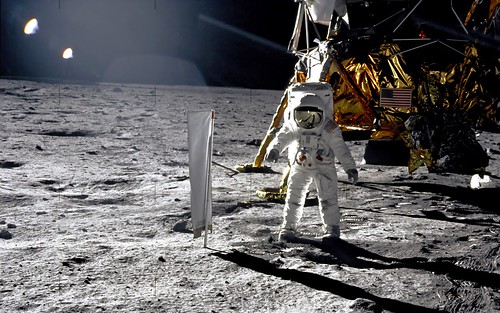
A man has received a genetically modified pig’s kidney as a transplant. Will this ever be more than an occasional last-ditch experiment? CC-licensed photo by Nick Saltmarsh on Flickr.
You can sign up to receive each day’s Start Up post by email. You’ll need to click a confirmation link, so no spam.
It’s Friday, so there’s another post due at the Social Warming Substack at about 0845 UK time. It’s about our worst fears on AI content starting to come true.
The Overspill is going on a break while I have a minor op on an elbow. Away for at least two weeks. Stay well!
A selection of 11 links for you. Use them wisely. I’m @charlesarthur on Twitter. On Threads: charles_arthur. On Mastodon: https://newsie.social/@charlesarthur. Observations and links welcome.
How Apple’s war on super apps became the centre of its antitrust fight • The Verge
Emma Roth:
»
“For years, Apple blocked cloud gaming apps that would have given users access to desirable apps and content without needing to pay for expensive Apple hardware because this would threaten its monopoly power,” the lawsuit reads. “In Apple’s own words, it feared a world where ‘all that matters is who has the cheapest hardware’ and consumers could ‘buy[] a [expletive] Android for 25 bux at a garage sale and… have a solid cloud computing device’ that ‘works fine.’”
Additionally, the DOJ is also going after Apple’s limitations on super apps, which offer access to a range of different services from a single application and are especially popular in Asia. For example, WeChat, which is huge in China, functions as a messaging, payment, and short-form video-sharing service. It also lets users install “mini” programs that exist within WeChat.
This setup is convenient for users and developers, the DOJ argues, as users don’t have to download a bunch of separate apps to gain access to different capabilities. Meanwhile, developers also don’t have to push separate app updates for Android and iOS, since these programs run within an app instead of on a phone itself.
However, the DOJ’s lawsuit claims that Apple doesn’t want users or companies in the US to benefit from super apps. It notes that during a board of directors presentation, Apple cited super apps as a “major headwind” to boosting iPhone sales in countries where they’re popular because of “[l]ow stickiness” and “[l]ow switching costs.” If someone benefits from using a super app, they don’t necessarily need to be tied to any one ecosystem — like Apple’s.
«
WeChat is available for the iPhone. Line is available for the iPhone. But there aren’t super-apps like them in the US because the competition between Apple and Android at the early stages of the smartphone market preempted them: companies focussed on controlling single spaces rather than trying to be everything. This lawsuit throws a lot of things against the wall and it’s going to distract Apple for years.
unique link to this extract
Apple slams DOJ case as misguided attempt to turn iPhone into Android • TechCrunch
Natasha Lomas:
»
The suit claims Apple holds a more than 70% share of “performance smartphones” and over 65% of the US smartphone market, respectively.
In a briefing with journalists following the DOJ’s announcement this morning, Apple dismissed these market definitions as gerrymandering on the part of government lawyers trying to make a monopoly case stick where it argues there is none.
It says the circa 20% global smartphone market share the iPhone holds is the only market definition that makes sense.
In wider remarks Apple hit out at the DOJ’s case as legally dubious and/or misguided — suggesting it’s an attempt to replicate the antitrust case the government successfully brought against Microsoft’s Windows OS back in the 1990s by desperately trying squeeze Apple into the same mould.
Apple representatives reject any comparison here, pointing out that Microsoft had a 95% market share, for example. They also argue it ignores how Apple has created an entirely new marketplace for developers and consumers.
On the call, Apple representatives sought to back up this claim by dropping in a few growth metrics — saying for example that, over the past ten years, the number of paid developers on the App Store has increased by 374% (from 1.1 million to 5.2 million).
Citing stats from 2020 to 2022, they also sought to highlight growth in commerce generated by developers in its App Store. Globally, they said this increased by 64%, from $685bn to $1.1 trillion. Although it’s worth noting the time period Apple selected to highlight here spans the pandemic, when digital commerce skyrocketed for all sorts of services as a consequence of lockdowns, and often came back down to Earth with a bump after pandemic restrictions lifted.
While Apple is seeking to paint the government as misguided, it is directly accusing a handful of vested commercial interests of being the driving force behind the lawsuit.
«
That “performance smartphone” market definition is never going to stand up in court. Though the global one doesn’t matter for the US. The DOJ needs to show Apple using its phone “monopoly” to keep others out of adjacent markets. This isn’t that.
unique link to this extract
Apple says it spent three years trying to bring Apple Watch to Android • 9to5Mac
Chance Miller:
»
As part of its response to the United States DOJ lawsuit today, Apple confirmed that it at one point considered creating an Apple Watch for Android. The company tells me that it spent three years working on bringing Apple Watch to Android before ultimately scrapping the idea.
In its lawsuit, the Department of Justice uses the Apple Watch as a piece of evidence to justify its claim that Apple is a monopoly:
»
Apple’s smartwatch—Apple Watch—is only compatible with the iPhone. So, if Apple can steer a user towards buying an Apple Watch, it becomes more costly for that user to purchase a different kind of smartphone because doing so requires the user to abandon their costly Apple Watch and purchase a new, Android-compatible smartwatch.
«
In response to the DOJ’s assertion, Apple confirmed for the first time that it at one point considered Android support for the Apple Watch. After a three-year investigation, Apple says that it determined an Apple Watch with Android support wasn’t doable because of technical limitations. As such, it scrapped the idea.
This aligns with previous reporting from Bloomberg’s Mark Gurman. In a November 2023 report, Gurman detailed Apple’s plans – including some of the “business considerations” – on bringing Apple Watch support to Android.«
The linked piece says Apple was looking to expand sales of the Watch, since adding Android support would create a much bigger total addressable market (TAM). But it gave up for “business reasons”, said Gurman – that it would dilute the attraction of the iPhone. However the DOJ isn’t dinging Apple for not offering the Watch on Android; it’s criticising special APIs and permissions that Apple apps get on the Watch that third-party ones don’t. So, not quite dispositive.
unique link to this extract
Motorola Moto G Power 2024 review: a good phone spoiled by bloatware • The Verge
Allison Johnson:
»
There are some phones that just feel nice to pick up, and the 2024 Moto G Power is one of them. It’s sitting on my desk and even though I don’t need to do anything with it right now, I pick it up anyway. That soft-touch back! The flat-yet-slightly-contoured edges! I turn it to look at the headphone jack on the bottom edge, just to remind myself if it’s there. If the battery is even a little low, I set it on my wireless charging stand just for the thrill. All this on a $300 phone! Imagine!
But after spending a little more time with the Moto G Power, I come crashing back down to reality. The LCD panel isn’t as nice and contrast-y as an OLED (that’s forgivable). The camera is underwhelming and suffers from Motorola’s unusual image processing tendencies (less forgivable). But again, this is a $300 phone in a world where $1,000 is the standard going rate for a top-tier flagship. Much can be forgiven!
Except one thing: the bloatware.
Scroll through the app drawer and you’ll see a handful of automatically downloaded “folders.” They are not folders; they are apps. I first encountered them on last year’s Moto G Stylus 5G, and I hate them very much.
«
But Allison, the apps that you describe as a “user privacy nightmare” and which bring down the price of the phone are all Apple’s fault! According to the DOJ, at least. Somehow.
unique link to this extract
Man ‘recovering well’ after pig kidney transplant • BBC News
Michelle Roberts:
»
A 62-year-old man is said to be recovering well and should leave hospital soon, after getting a new kidney from a pig that was genetically modified to reduce the risk of the organ being rejected.
US surgeons say Rick Slayman is a “real hero” for trying the pioneering operation. The ultimate hope is to use animal organs for more transplants.
Pig kidneys have been put into brain-dead people before as a test.
The four-hour surgery, performed on 16 March, “marks a major milestone in the quest to provide more readily available organs to patients”, Massachusetts General Hospital said in a statement. Mr Slayman had a human kidney transplant at the same hospital in 2018 after being on dialysis for seven years before that, because his own kidneys were not working properly. Five years later, the transplant failed and he had to go back on dialysis in May 2023.
His prospects were not looking good, say his doctors – getting the dialysis to work was difficult since his blood vessels had been repeatedly used for it many times.
He encountered recurrent dialysis vascular access complications, requiring visits to the hospital every two weeks for de-clotting and surgical revisions, significantly affecting his quality of life, his doctors explained.
Mr Slayman said he weighed up the pros and cons and decided to go ahead with the pig kidney transplant: “I saw it not only as a way to help me, but a way to provide hope for the thousands of people who need a transplant to survive.”
«
As a reminder, the last attempt at a version of this type of xenotransplant was in January 2022. It still feels like this is many years away from being routine, or even successful. One wishes Mr Slayman the best, but his prospects aren’t wonderful.
unique link to this extract
Netflix’s 3 Body Problem review: an solid debut that could go deeper • The Verge
Charles Pulliam-Moore:
»
In his 2008 sci-fi novel The Three-Body Problem, Cixin Liu created a fascinating world where cutting-edge particle physics, VR gaming, and Chinese history played crucial roles in shaping humanity’s response to an imminent planet-wide threat. It also seemed unfilmable. The depth of the book’s ideas about cultural memory and the complexity of its central mystery made The Three-Body Problem feel like a story that could only work on the page.
That hasn’t stopped streamers from trying, and last year, Tencent debuted its own live-action, episodic take on Liu’s book. Netflix spent a fortune putting 3 Body Problem in the hands of executive producers David Benioff, D. B. Weiss, and Alexander Woo. Their adaptation is leaner and more diverse than the book in a way that makes it a very different kind of story. Often, it’s a good one — and very occasionally a great one — that works as an introductory crash course to the basic ideas key to understanding the larger concepts that shape Liu’s later books.
But rather than confronting the sophistication of the book, Netflix’s main priority with 3 Body Problem seems to be selling it as the next Game of Thrones (Benioff and Weiss’ last series). And while it’s easy to understand why the streamer might want that, it’s hard not to see the show as a flashy but stripped-down version of the source material.
«
Hey ho. The series starts streaming on Netflix on March 28th, so fire up your subscriptions next week. Unless this has put you off.
unique link to this extract
Why is AI so bad at spelling? • TechCrunch
Amanda Silberling:
»
On Reddit, YouTube and X, a few people have uploaded videos showing how ChatGPT fails at spelling in ASCII art, an early internet art form that uses text characters to create images. In one recent video, which was called a “prompt engineering hero’s journey,” someone painstakingly tries to guide ChatGPT through creating ASCII art that says “Honda.” They succeed in the end, but not without Odyssean trials and tribulations.
“One hypothesis I have there is that they didn’t have a lot of ASCII art in their training,” said Hagdu. “That’s the simplest explanation.”
But at the core, LLMs just don’t understand what letters are, even if they can write sonnets in seconds.
“LLMs are based on this transformer architecture, which notably is not actually reading text. What happens when you input a prompt is that it’s translated into an encoding,” Guzdial said. “When it sees the word “the,” it has this one encoding of what “the” means, but it does not know about ‘T,’ ‘H,’ ‘E.’”
That’s why when you ask ChatGPT to produce a list of eight-letter words without an “O” or an “S,” it’s incorrect about half of the time. It doesn’t actually know what an “O” or “S” is (although it could probably quote you the Wikipedia history of the letter).
Though these DALL-E images of bad restaurant menus are funny, the AI’s shortcomings are useful when it comes to identifying misinformation. When we’re trying to see if a dubious image is real or AI generated, we can learn a lot by looking at street signs, t-shirts with text, book pages, or anything where a string of random letters might betray an image’s synthetic origins. And before these models got better at making hands, a sixth (or seventh, or eighth) finger could also be a giveaway.
But, Guzdial says, if we look close enough, it’s not just fingers and spelling that AI gets wrong.
“These models are making these small, local issues all of the time – it’s just that we’re particularly well tuned to recognize some of them,” he said.
«
The video trying to get ChatGPT to spell Honda really is painful to watch. We are definitely not witnessing a superintelligence.
unique link to this extract
Higher temperatures mean higher prices for food and other items • AP News
Seth Borenstein:
»
Food prices and overall inflation will rise as temperatures climb with climate change, a new study by an environmental scientist and the European Central Bank found.
Looking at monthly price tags of food and other goods, temperatures and other climate factors in 121 nations since 1996, researchers calculate that “weather and climate shocks” will cause the cost of food to rise 1.5 to 1.8 percentage points annually within a decade or so, even higher in already hot places like the Middle East, according to a study in Thursday’s edition of the journal Communications, Earth and the Environment.
And that translates to an increase in overall inflation of 0.8 to 0.9 percentage points by 2035, just caused by climate change extreme weather, the study said.
Those numbers may look small, but to banks like the US Federal Reserve that fight inflation, they are significant, said study lead author Max Kotz, a climate scientist at the Potsdam Institute for Climate Impact Research in Germany
“The physical impacts of climate change are going to have a persistent effect on inflation,” Kotz said. “This is really from my perspective another example of one of the ways in which climate change can undermine human welfare, economic welfare.”
«
Factcheck: 18 misleading myths about heat pumps • Carbon Brief
Jan Rosenow:
»
Heat pumps are an alternative to gas boilers and wood stoves for indoor heating.
They now feature in most proposals for cutting greenhouse gas emissions to net-zero by mid-century in order to meet the globally agreed aim of avoiding dangerous climate change.
For example, the Intergovernmental Panel on Climate Change (IPCC) says with high confidence that net-zero energy systems will include the electrification of heating “rely[ing] substantially on heat pumps” – with a possible exception only for extreme climates.
Heat pumps significantly cut greenhouse gas emissions from building heat and are the “central technology in the global transition to secure and sustainable heating”, according to the International Energy Agency (IEA).
Heat pumps are also a mature technology and are very popular in countries such as Norway, Sweden and Finland, where they are the dominant heating technology. For the first time in 2022, heat pumps outsold gas boilers in the US – and they continued to do so in 2023.
Yet, in major economies such as the UK and Germany, heat pumps are the subject of hostile and misleading reporting across many mainstream media outlets.
Here, Carbon Brief factchecks 18 of the most common and persistent myths about heat pumps.
«
Not a quick read, but useful. The point about “what happens in a power cut?” is useful to consider. (They don’t work, but neither would a gas boiler.)
unique link to this extract
How many transformers will the US distribution grid need by 2050? • US NREL
»
The United States is currently experiencing unprecedented imbalance between supply and demand for transformers—not the shape-shifting robots, but the crucial devices used on the power grid.
Almost every kilowatt-hour of electricity flows through a distribution transformer. Similar to how a traffic cop manages the flow of vehicles on a road, distribution transformers manage the flow of electricity along the power grid by changing high-voltage electricity from transmission lines into low-voltage electricity before it reaches consumers.
“Distribution transformers are a bedrock component of our energy infrastructure,” National Renewable Energy Laboratory (NREL) researcher Killian McKenna said. “But utilities needing to add or replace them are currently facing high prices and long wait times due to supply chain shortages. This has the potential to affect energy accessibility, reliability, affordability—everything.”
«
You have to delve into the linked paper about the problem to find out how many transformers there are, and then might be:
»
NREL preliminary analysis estimates current stock of between 60-80 million distribution transformers with upwards of 3 terawatts (TW) of installed capacity, and estimates the growth in overall stock capacity by 2050 will see up to a 160%–260% increase on 2021 levels.
«
This is the sort of boring but essential infrastructure that you don’t normally think about, but when you see the numbers needed – in the tens of millions, split between more than 3,000 distribution utilities – you get a picture of how complex the problem is, literally just to keep the lights on.
unique link to this extract
MrBeast may never quit YouTube, but his game is changing • Polygon
Patricia Hernandez:
»
much of what’s been heralded in YouTube’s era of MrBeast sounds bleak, but the next era might already be upon us. If the old YouTube was Instagram, the new YouTube will be more like TikTok. That manifests in literal ways, with the company putting much of its energy into “shorts,” but also figuratively, beyond structural elements. TikTok’s strength lies in its ability to surface videos from everyday users to an enormous audience, and it’s so good at doing this that people talk about its algorithm in mystical terms. Meanwhile, trust in media establishments continues to decline, while more and more Americans are turning to TikTok for their news.
The internet, in other words, is hungry for authenticity — or at least a person they can detect as human to deliver their content. It’s the very thing YouTube once did best, once the internet moved past the supremacy of blogs. “We are seeing many creators blow up right now because they’re creating good content while maintaining their relatability,” Smigel says. Spending a million dollars on a hotel room, as MrBeast did in a recent video, during a period where some can’t afford basic necessities and numerous industries fight for better working conditions, isn’t exactly relatable. Ostentatious influencers like the Kardashians are already experiencing the consequences of this shift within the public eye, but the changing attitudes of the broader viewership will likely hit YouTube’s elite.
It’s unlikely we’ll see MrBeast dethroned anytime soon, and even less likely that the incoming class of creators will reach his same viewership. Monoculture of that sort is a vanishing rarity, nor a marker of quality. MrBeast isn’t the best YouTube has to offer; he’s just made that rhetoric his brand.
«
One thing this piece brings out is how incredibly exhausting it is to keep going viral and never having a miss. And there’s always someone coming along who surfs the algorithm as it changes and threatens to overtake you.
unique link to this extract
| • Why do social networks drive us a little mad? • Why does angry content seem to dominate what we see? • How much of a role do algorithms play in affecting what we see and do online? • What can we do about it? • Did Facebook have any inkling of what was coming in Myanmar in 2016? Read Social Warming, my latest book, and find answers – and more. |
Errata, corrigenda and ai no corrida: none notified









